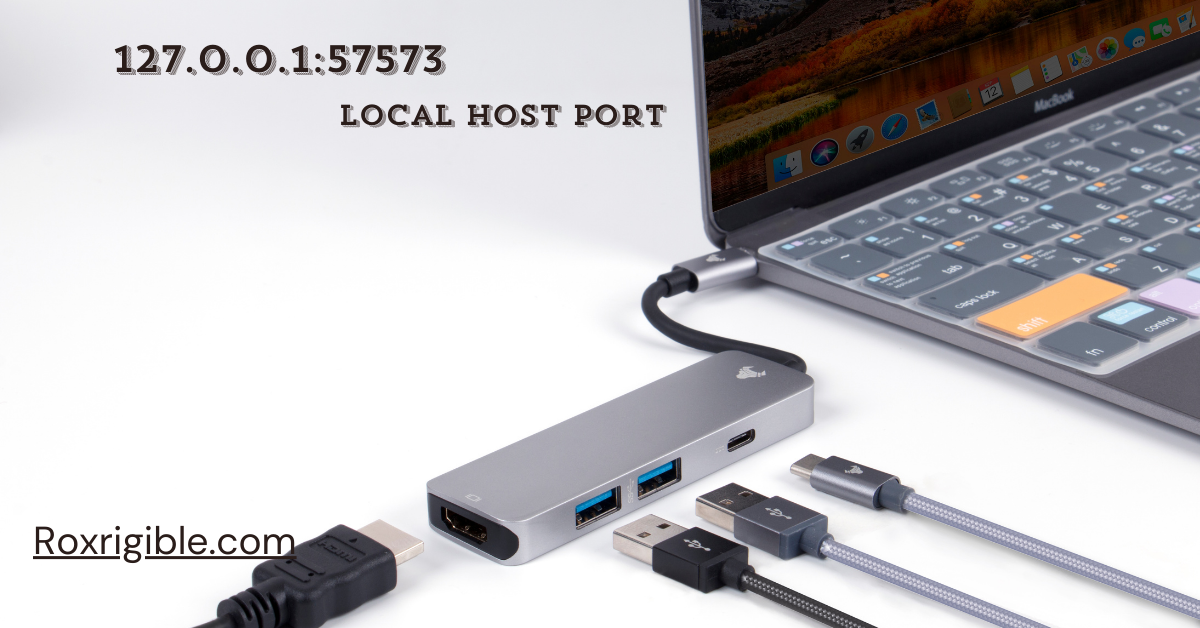In a networking context, you could feel more at ease using the address “127.0.0.1:57573”. It may seem at first that this arrangement of letters and numbers is a disjointed jumble of technical words. But it’s lot easier to understand if you break it down. This blog post will cover 127.0.0.1:57573 in great detail, including its description, importance in the networking industry, and real-world uses. You will have a solid understanding of this idea and how it could relate to your personal requirements by the time this essay concludes.
12.7.0.0.1 – what is it?
Let us examine the first part of the term, 127.0.0.1, first. The term “IP address” refers to this string of integers. The “loopback” IP address is the name given to it explicitly. But what does that actually imply in practice? Computers and other devices communicate to one another over networks using IP addresses, which are unique identities. An IP address is a unique identifier for any device connected to a network; it works similarly to a location’s home address.
127.0.0.1 is a unique IP address. Computers alone may refer to themselves using this symbol. Its designation as a “loopback” address stems from this. If you use 127.0.0.1, your computer can communicate with its own hardware. It’s similar like picking up your own phone number. This is incredibly helpful, even with its strange tone, particularly for evaluation and development scenarios.
The Loopback function address’s significance
Local Testing: When testing software locally on personal computers, developers utilize 127.0.0.1. They may make sure their applications function as intended without interfering with live systems by utilizing this address. Before putting a website online, a web developer could utilize 127.0.0.1 to run a local duplicate of it on their computer.
Engineers utilize the IP address 127.0.0.1 for network diagnostics while looking for problems with the network. You can send data to this address to confirm that the machine’s network stack is operational. A problem with the network settings may exist if the system is unable to connect to 127.0.0.1.
One way to improve security is to use the loopback address. In order to restrict access to some apps to the local system, some may be set up to only allow connections from 127.0.0.1. When external systems should not communicate with your program, this is a regular occurrence in development settings.
Comprehending 57573: The Function of the Port
After discussing the definition of 127.0.0.1, let’s move on to the following term: 57573. A port is indicated by this number. A network connection’s start and end are represented by virtual points called ports. Contemplate it as a particular entrance that allows data to enter or depart a building (your computer).
There are 65,535 available ports on every given machine. Different kinds of network traffic are divided using ports. For instance, HTTP traffic on the web usually uses port 80, whereas HTTPS traffic uses port 443. Among the several ports that can be utilized is port number 57573. Its high port number typically indicates that it is used for one-time or particular uses, such as when a developer runs a local server for testing.
The Interaction of 127.0.0.1:57573
An IP address and a port number are combined to form “127.0.0.1:57573.” They combine to provide a whole network address. To link your computer to a particular program or service that is operating on it, utilize this address.
Here is how it works:
According to our recommendation, your device should connect to itself via IP address 127.Zero.Zero.1.
This transfer is intended to a specific service or piece of software that is listening on port 57573.
In essence, you are instructing your laptop to communicate with a fantastic service by running 127.0.Zero.1:57573, which is jogging regionally on port 57573. This is most likely a database, web server, or perhaps a gaming server.
Uses of 127.Zero.0.1:57573 in the Real World
Now that you know how 127.Zero.0.1:57573 operates, let’s look at some practical applications for it:
Environments for Local Development: When running programs on their nearby computers, developers typically utilize 127.Zero.Zero.1:57573. Developers may, for example, test a website before it launches by configuring a local web server on port 57573. Instead of running the danger of making the website public, people may interact with it as if it were online by using 127.0.0.1:57573.
127.0.0.1:57573 is used by developers and network administrators to diagnose and troubleshoot network issues. Apps that don’t operate as intended could require their proper port listening to be verified. To test network connections and software response, use 127.0.0.1:57573.
Security experts can use 127.0.0.1:57573 to audit and secure their applications while doing application security audits. Tests may be conducted locally to make sure the application is only receiving permitted traffic. This aids in finding weak points in the system without leaving it open to outside attacks.
Teaching Objectives: 127.0.0.1:57573 is a useful resource for students studying software development or networking. To explore and learn how network connections function, it offers a secure environment. Inexperienced users may establish network connections, build up local servers, and directly observe how data moves between various system components.
Frequent Problems and Solutions 127.0.0.1:57573
As simple as it is to use 127.0.0.1:57573, there are a few frequent problems you may run into:
Port conflicts: There is a chance that another program is already using port 57573. You will need to select an alternate port number in order to prevent conflicts if this occurs. When several programs are running concurrently in development environments, this is a frequent problem.
Firewall Restrictions: Some firewalls have the ability to ban connections to certain ports, like 57573. If you are having problems connecting, you should check your firewall settings. A rule allowing traffic on port 57573 might need to be established.
Connection failures to 127.0.0.1:57573 might be caused by issues with the software. Reboot your computer or update its software if you think there could be an issue. Sometimes the problem can also be fixed by changing the port settings of the program.
Reasons for Perceiving 127.0.0.1:57573
If anything, one may question why they should care about anything as particular as 127.0.0.1:55573. It may be helpful to have some knowledge of the internal connections within your computer, even if you’re not an expert in networks or development. You may utilize it to figure out how basic problems are solved, learn about the inner workings of networking and web development, or even learn how local programs function.





